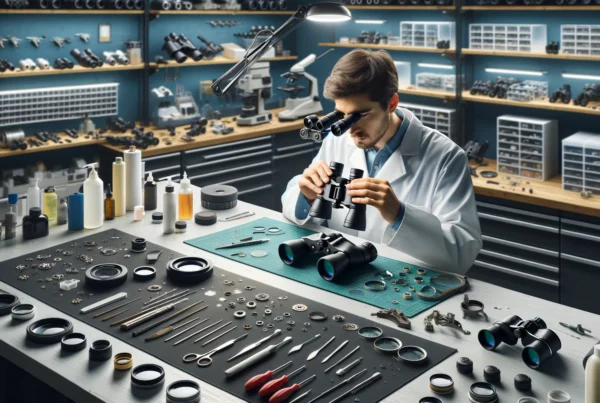Contents
The distinction between close focus and far focus is essential for those seeking enhanced long-distance observations.
Close focus is for observing nearby details like birds, while far focus excels at long-distance clarity, ideal for stargazing or wildlife viewing. Choosing the right focus suits your interests, enhancing your viewing experience.
Both capabilities are essential in their own right, catering to a range of interests, and embracing both in your binocular experience ensures you can appreciate the beauty of the world, whether it’s nearby or far away.
| Aspect | Close Focus | Far Focus |
| Relevance | Ideal for observing nearby details, such as birds or flora. | Crucial for bringing distant subjects closer and in detail. |
| Applications | Birdwatching, exploring nearby nature, insect observation. | Stargazing, wildlife spotting, sporting events, astronomy. |
| Minimum Distance | Typically, a few feet to a few yards. | Unlimited, but performance may vary with binocular type. |
| Objective Size | Smaller objective lenses often sufficient. | Larger objective lenses gather more light for clarity. |
| Technology | Precision focusing mechanisms enhance close focus. | Advanced coatings, optics, and prisms improve far focus. |
| Image Stabilization | Useful for steady close-up observation. | Particularly valuable for clear far focus without shaking. |
Close Focus — Binoculars
Close Focus refers to the minimum distance at which binoculars can be focused while still providing a sharp and clear image. It’s a feature that allows you to appreciate the finer details of objects and subjects that are nearby.
For binocular enthusiasts, especially those keen on birdwatching or exploring the intricacies of nature up close, close focus is of paramount importance.
Applications of Close Focus in Binoculars
Birdwatching: Close focus is essential for observing birds at their best. Whether they’re perched on branches, feeding, or displaying their unique behaviors, the ability to focus on nearby details enhances the birdwatching experience immensely.
Nature Exploration: Naturalists and outdoor enthusiasts benefit from close focus when studying flora, insects, or geological formations. It adds depth to their exploration by revealing the beauty hidden in the world’s nooks and crannies.

Far Focus — Binoculars
Far Focus, on the other hand, is what binoculars are primarily designed for. It allows you to focus on distant objects or scenes with precision, making them appear closer and more detailed.
This is the quintessential function of binoculars and is indispensable for a range of activities, from astronomy to sports viewing.
Applications of Far Focus in Binoculars
Astronomy: For stargazers and amateur astronomers, far focus is the key to exploring the cosmos. It enables the observation of celestial objects such as planets, stars, and galaxies with breathtaking clarity, despite their immense distances.
Sports and Events: Far focus is vital for sports fans who want to catch all the action from a distance. Whether you’re at a stadium or a racetrack, binoculars with excellent far focus capabilities ensure that you don’t miss a single moment.
Wildlife Observation: Whether you’re on a safari or simply observing wildlife from a safe distance, far focus allows you to appreciate the natural world without disturbing the animals. It’s an essential tool for wildlife photographers and enthusiasts alike.
Factors Influencing Focus
In both photography and human vision, several factors can influence our ability to achieve close or far focus effectively:
Photography: The choice of lens, aperture settings, and camera specifications all affect the ability to focus at different distances. Prime lenses with wider apertures can create a shallow depth of field, making close focus more pronounced. Telephoto lenses are favored for far focus due to their ability to magnify distant subjects.
Human Vision: As we age, changes in the eye’s lens elasticity can impact our ability to shift focus between near and far objects. This is known as presbyopia, a common condition typically corrected with reading glasses or multifocal lenses.
Technological Advancements in Binoculars
Advancements in binocular technology have significantly improved both close focus and far focus capabilities. Today’s binoculars often feature specialized lens coatings, high-quality prisms, and advanced focusing mechanisms that enhance the clarity and precision of observations.
Image stabilization technologies have also made it easier to maintain a steady focus, even when holding binoculars by hand.
Frequently Asked Questions (FAQs)
What is the minimum close focus distance in binoculars, and why does it matter?
The minimum close focus distance in binoculars refers to the shortest distance at which binoculars can focus while maintaining a clear image. This distance is crucial for observing nearby objects with precision, making it relevant for birdwatching and studying small wildlife. Binoculars with a shorter close focus distance allow you to explore the beauty of nearby details.
How does far focus capability in binoculars enhance long-distance viewing?
Far focus capability in binoculars is essential for observing distant objects or scenes with clarity and detail. It allows you to bring faraway subjects closer, making it indispensable for stargazing, wildlife observation, and enjoying sporting events from a distance. The ability to focus on distant subjects ensures that you don’t miss out on any of the action or breathtaking views.
Can binoculars achieve both close focus and far focus on a single pair?
While some binoculars offer versatile focusing capabilities, such as a wide range of close and far focus distances, most binoculars are designed with a primary focus on either close or far focus. Specialized binoculars may excel in one area, but it’s important to choose binoculars that match your intended use, whether it’s close-up observation or long-distance viewing.
What technological advancements have improved close focus and far focus on modern binoculars?
Technological advancements in binoculars have led to improvements in optics, coatings, and focusing mechanisms. High-quality lenses, phase-corrected prisms, and advanced coatings enhance image clarity and brightness for both close and far focus. Additionally, image stabilization technology helps maintain a steady focus, particularly useful for long-distance viewing without the need for a tripod.
Bottom Line
Close focus and far focus are not opposing concepts, but rather complementary features that cater to different observation needs. If you’re a birdwatcher, an amateur astronomer, or simply someone who enjoys exploring the great outdoors, understanding the relevance of close focus and far focus on binoculars can greatly enhance your viewing experience.
As technology continues to advance, binoculars will only become more versatile and capable, promising even more exciting possibilities for observing the world around us, both near and far.

A Binoculars enthusiast, who love exploring skies and watching birds. It is my hobby to collect Binoculars of different kinds and try to explore the world through various lenses. This is all I do to explore happiness by magnifying my beautiful world.




